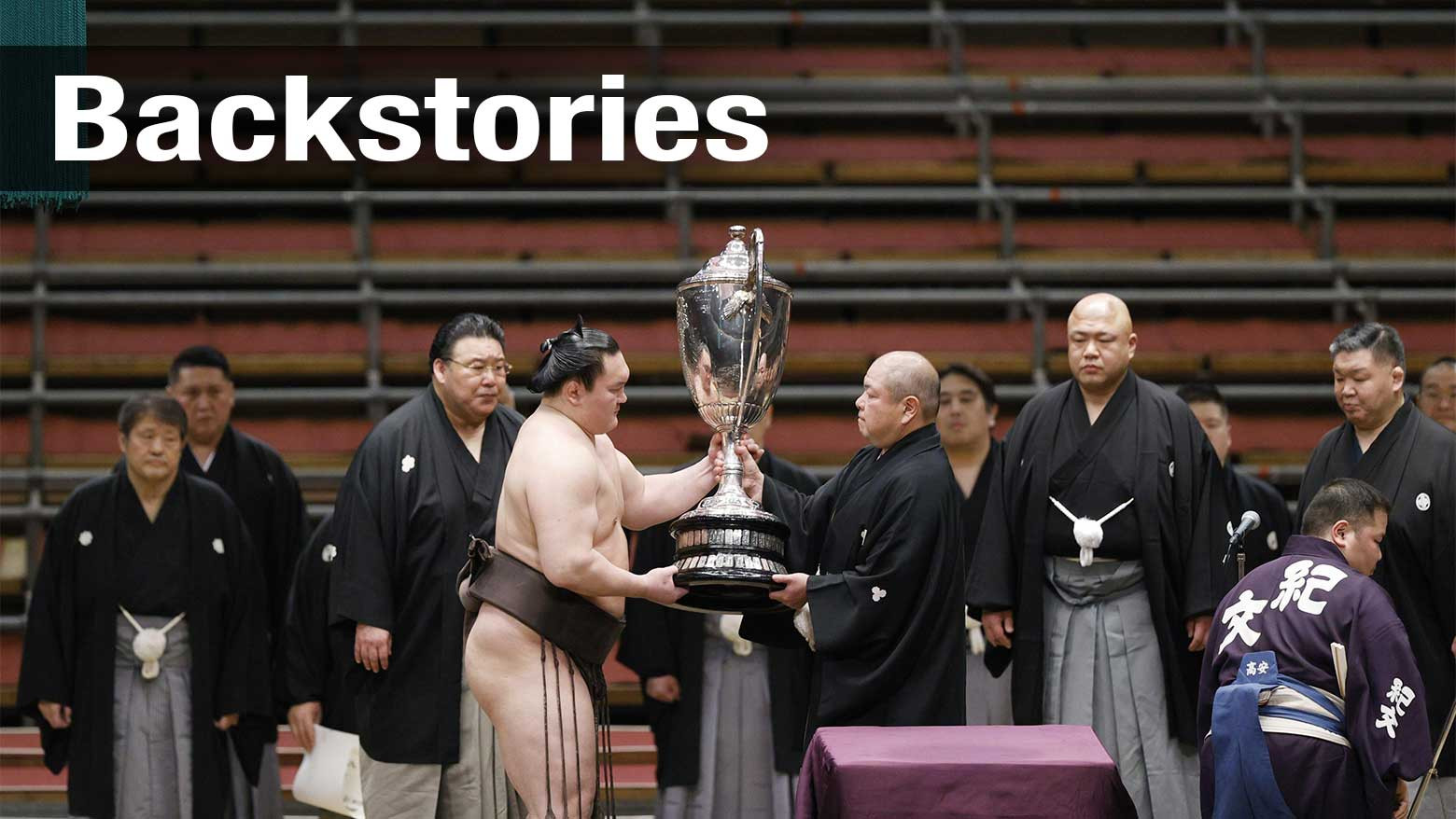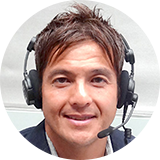New coronavirus impacts the spring tourney
In late February, Japan Sumo Association announced the Banzuke, or official listing of ranks for the spring tournament. All the wrestlers began to intensify their training sessions to gear up for the upcoming event. At the same time the outbreak of the new coronavirus had everyone wondering whether the spring tourney should be held as planned.
On March 1st, one week before opening day, the chairman of the sumo association Hakkaku announced that the spring tournament would be held as scheduled but without having any spectators in attendance, a move to prevent the spread of the virus.
On March 8th, the competition got underway at the Osaka Prefectural Gymnasium with not a single fan in the stands -- the first time that's happened in the sport's history.
Measures taken to combat the virus
Even though the spring meet began as scheduled, the sumo association said if anyone from the sumo association became infected with the virus, the tournament would be called off immediately. To prevent that from happening, the board of directors requested that everyone involved follow certain rules.
First, wrestlers were required to take their temperatures twice a day... once in the morning and again in the evening. If a wrestler had a temperature of more than 37.5 degrees for two consecutive days, he would be kept out of the ring.
Wrestlers and stable masters were also told to refrain from using trains, buses and other public transportation to avoid catching the virus. Before entering the arena, all personnel were required to put on surgical masks and disinfect their hands.
As for the chikaramizu "water of power" ritual in which the winner of a bout offers a ladle of water to the next combatant, wrestlers were told not to put their mouths to the ladle to avoid any chance of contracting the virus.
Also, the media was barred from entering the shitakubeya dressing rooms to interview the wrestlers. Instead, so called mix-zones were set up where reporters could talk to the wrestlers from a distance.
The tournament kicked off on March 8th, but everyone knew there was a chance the event would not go the full distance, so they were keeping their fingers crossed.
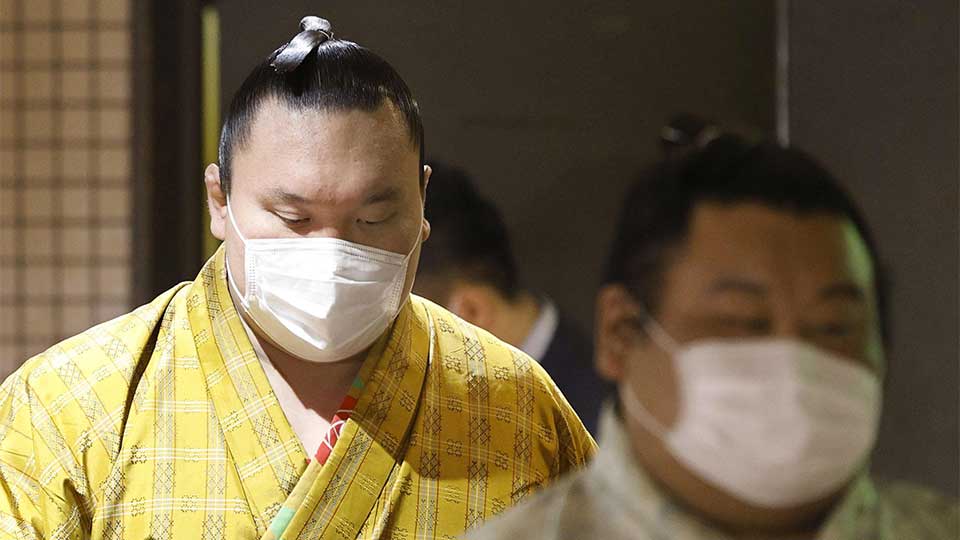
How did the wrestlers respond to the measures? Well, they had mixed feelings. Many wrestlers told me they felt uncomfortable competing without anyone watching in the stands and no one cheering them on. Some even told me the tournament should have been canceled. They said it was going to be very hard to maintain their focus and motivation over the entire 15 day period competing in such a weird atmosphere.
On the other hand, some said it was what it was, so they just had to get used to the situation quickly and take care of business as usual.
No spectators, but excitement filled the ring
When it came time to wrestle, though, it was all business as usual. At the half-way point, the tournament was led by Yokozuna grand champion Hakuho who had a perfect 8-0 record. A couple of rank and filers, Takanosho and Aoiyama, were right on Hakuho's heels, with just 1 loss each.
But things took an unexpected turn when Hakuho was upset by Onosho on Day 10. And when he got beat again on the 12th day, it was the Bulgarian Aoiyama all of a sudden finding himself with sole possession of the lead with a record of 11 wins and 1 loss.
However, Aoiyama didn't stay in the pole position for long, losing his next 3 matches to relinquish any chance of winning his first top division championship.
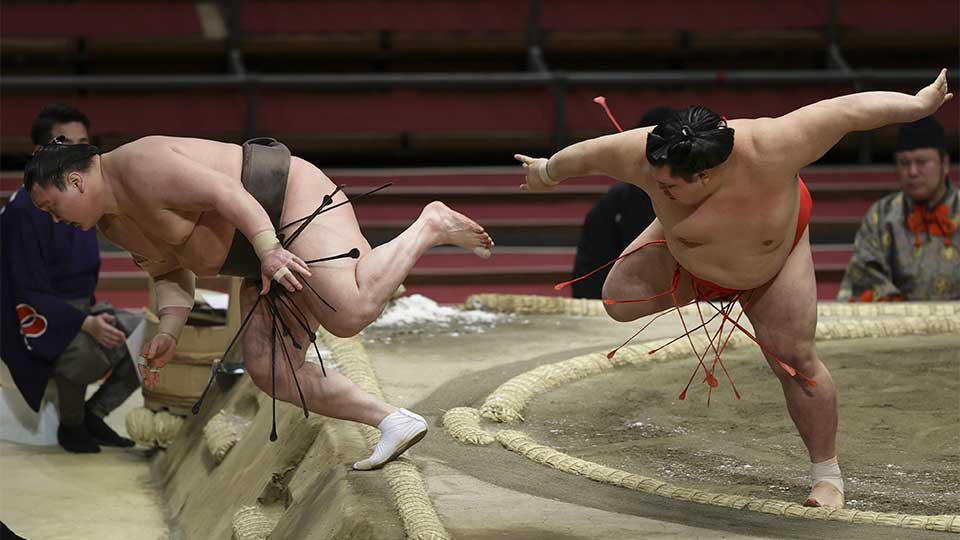
As the tournament entered the home stretch, there was one man who got himself back in the mix for the championship race. That was Kakuryu... Hakuho's rival Yokozuna. Kakuryu had suffered 2 losses after 6 days, so everybody had pretty much counted him out. But he kept plugging away and put together 8 consecutive wins to remain at 2 losses heading into the final day. The only other wrestler who had the same record after 14 days was none other than Hakuho which set up a Yokozuna showdown for all the marbles on the final day.
Clash of titans
So, on the 15th and final day, it was the two top dogs going head to head with everything on the line. Hakuho was gunning for his 44th top division title. Kakuryu on the other hand was aiming to haul in his 7th. As expected, the match turned into a seesaw battle with the two Yokozuna pitting brute force against each other in a war of attrition. The explosive confrontation of power and pride ended with Hakuho outlasting Kakuryu when he forced him out of the ring.
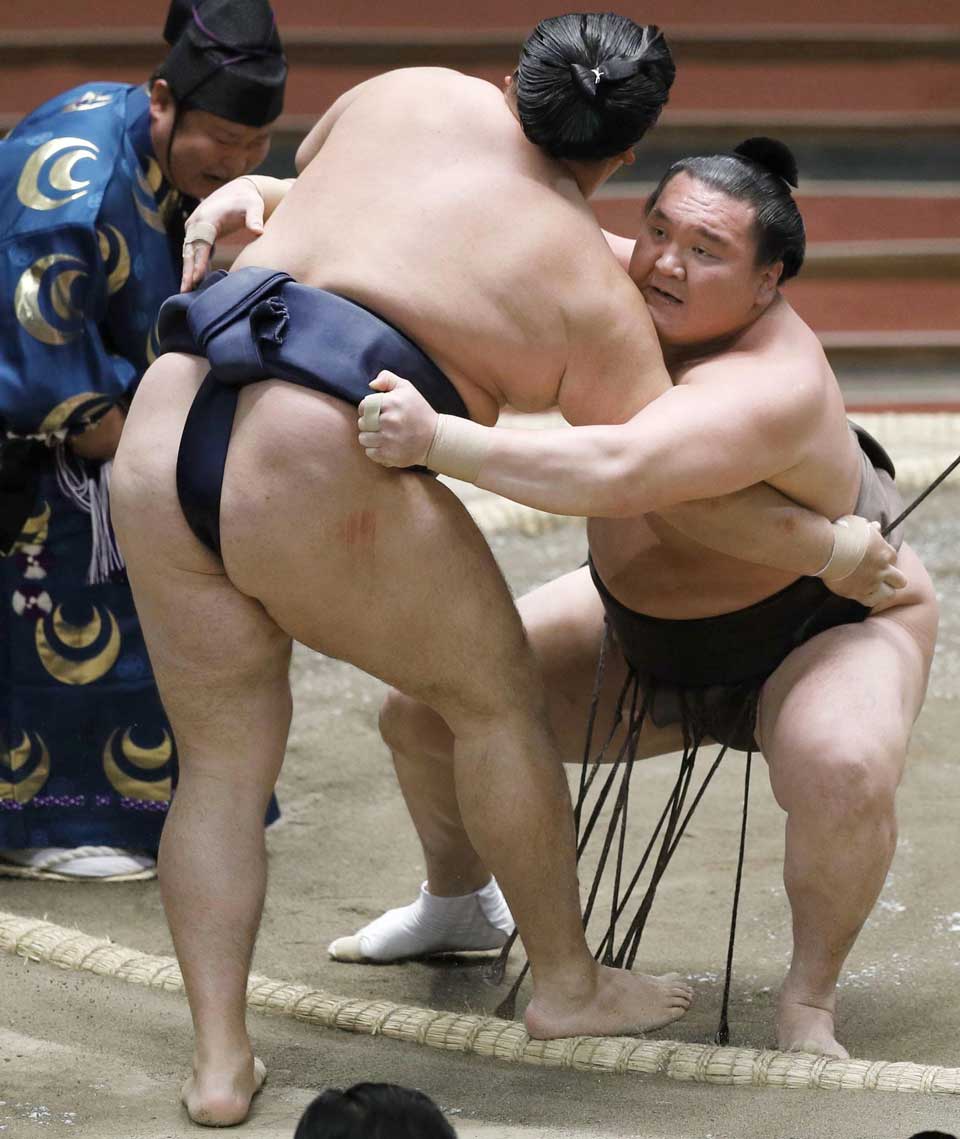
After the triumph, Hakuho said "Finally, it's over. Not only did we all have to fight the opponent in front of us in the ring, but also had to confront an invisible enemy the entire time. It was so tough competing in such a different and difficult environment."
Even when he received the Emperor's Cup, there was no smile on Hakuho's face. His expression pretty much summed up the feelings of all the wrestlers who had to compete under such extraordinary circumstances in Osaka.
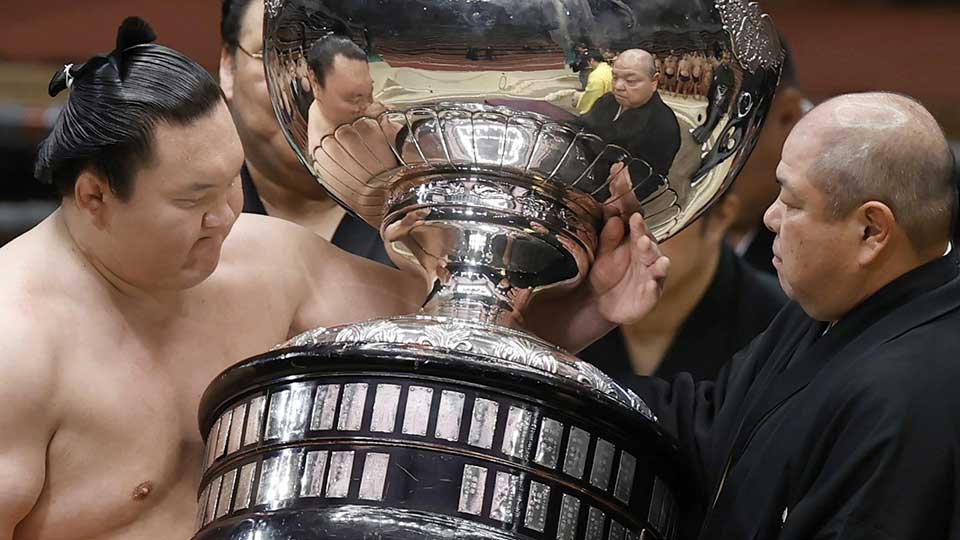
Ascension to Ozeki
Asanoyama who competed at the third highest rank of Sekiwake was hoping to gain a promotion to the second highest Ozeki rank this time. To accomplish his mission, the 26-year-old had to score a minimum of a double-digit winning record. Entering Day 15, Asanoyama already had 10 wins, but the general perception was that he needed to win one more to solidify his promotion.
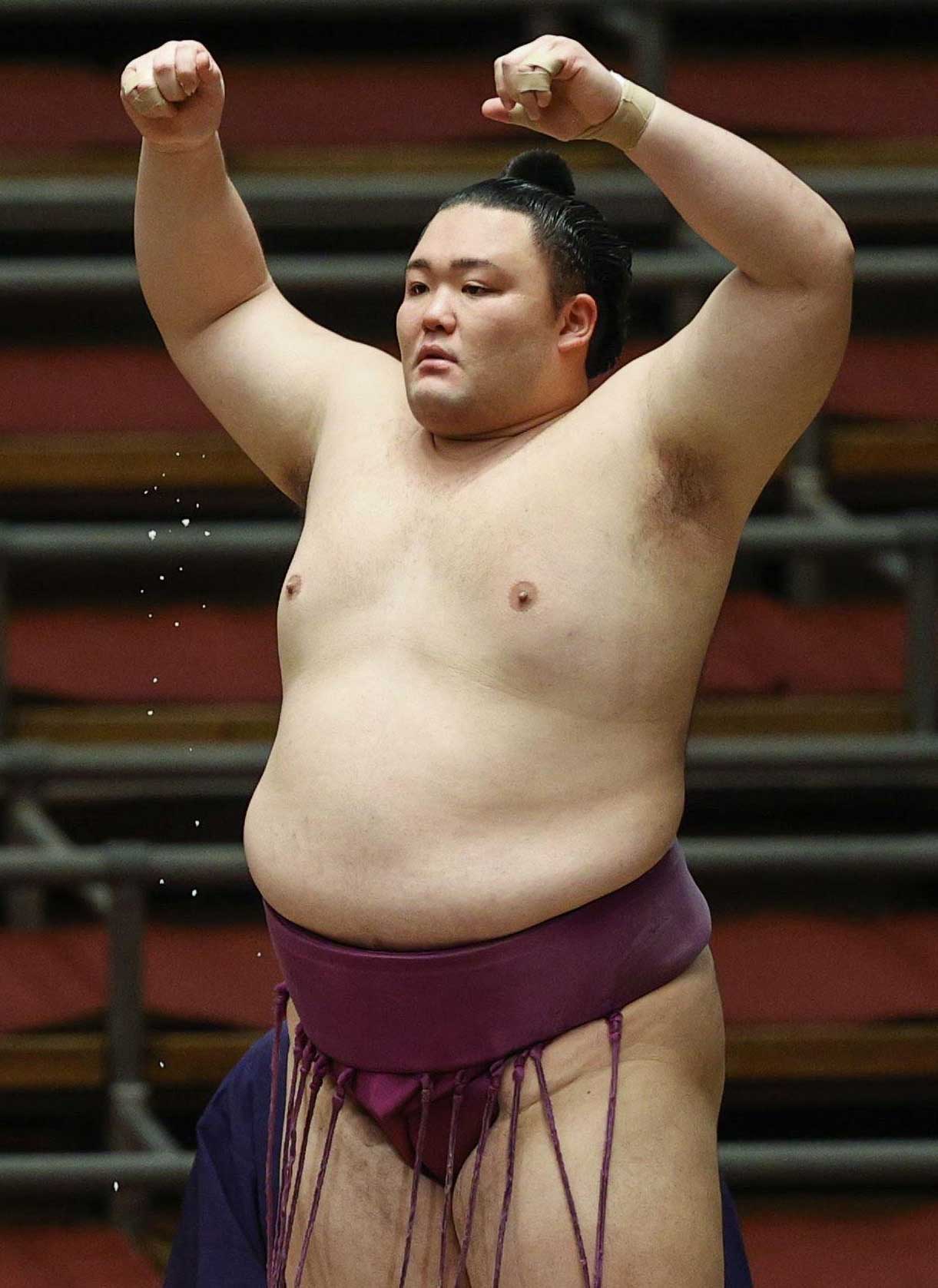
His final day opponent was Ozeki champion Takakeisho whose record was 7 wins and 7 losses. So, on one side there was Asanoyama with his promotion to Ozeki at stake, and on the other, we had a wrestler who was desperate to avoid ending the 2-week meet with an embarrassing losing record as an Ozeki.
When the dust settled, it was Asanoyama taking care of business by dispatching Takakeisho in dominating fashion. Asanoyama ended the contest with 11 wins and 4 losses and his victory over Takakeisho punched the ticket for his ascension to the second highest rank of Ozeki.
During his promotion ceremony on March 25th, the newly promoted Ozeki said that he would love sumo, act justly as a wrestler, and work hard, so as not to disgrace the Ozeki title.
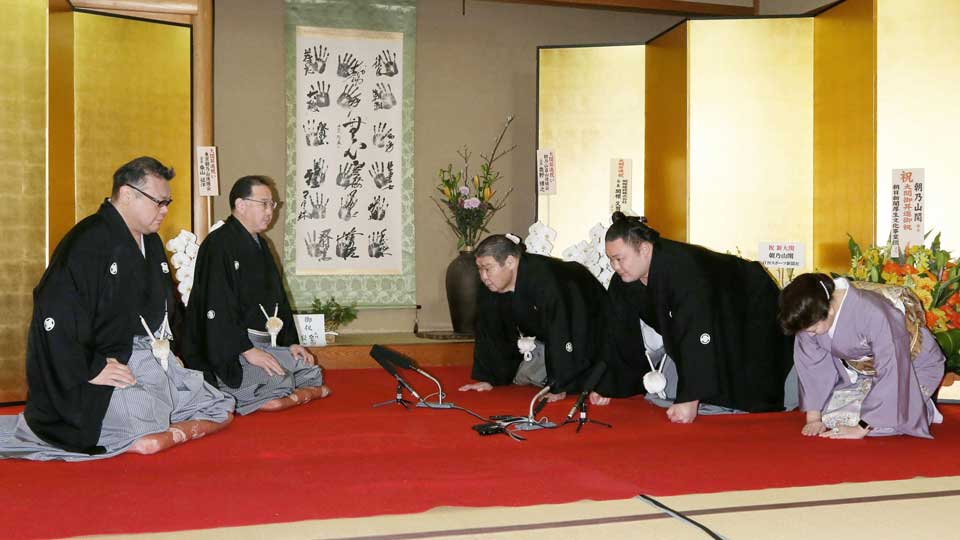
I'm sure fans agree with me that he's still far from reaching his true potential. To me, Asanoyama has what it takes to become the next Yokozuna grand champion. To get there, though, he'll need to work a lot harder on two things.
First of all, he has to hit his opponent much harder at the initial charge. His initial charge still lacks explosiveness. He has to be able to knock his opponent's socks off right from the get-go to take early advantage in every single match.
Second, Asanoyama's go-to weapon is the attack with his left hand outside grip and if he can further polish his skills fighting from this particular position he could turn himself into an untouchable wrestler. Let's hope that Asanoyama keeps up his good work ethic and competes at a very high level as an Ozeki.
Special prize recipients
They say there are no points for second place, but in the world of sumo that's not entirely true. Yes, only the championship winner walks away with the Emperor's Cup, but there are other prizes given to those who played major roles in creating an exciting championship race over the course of the 15-day contest.
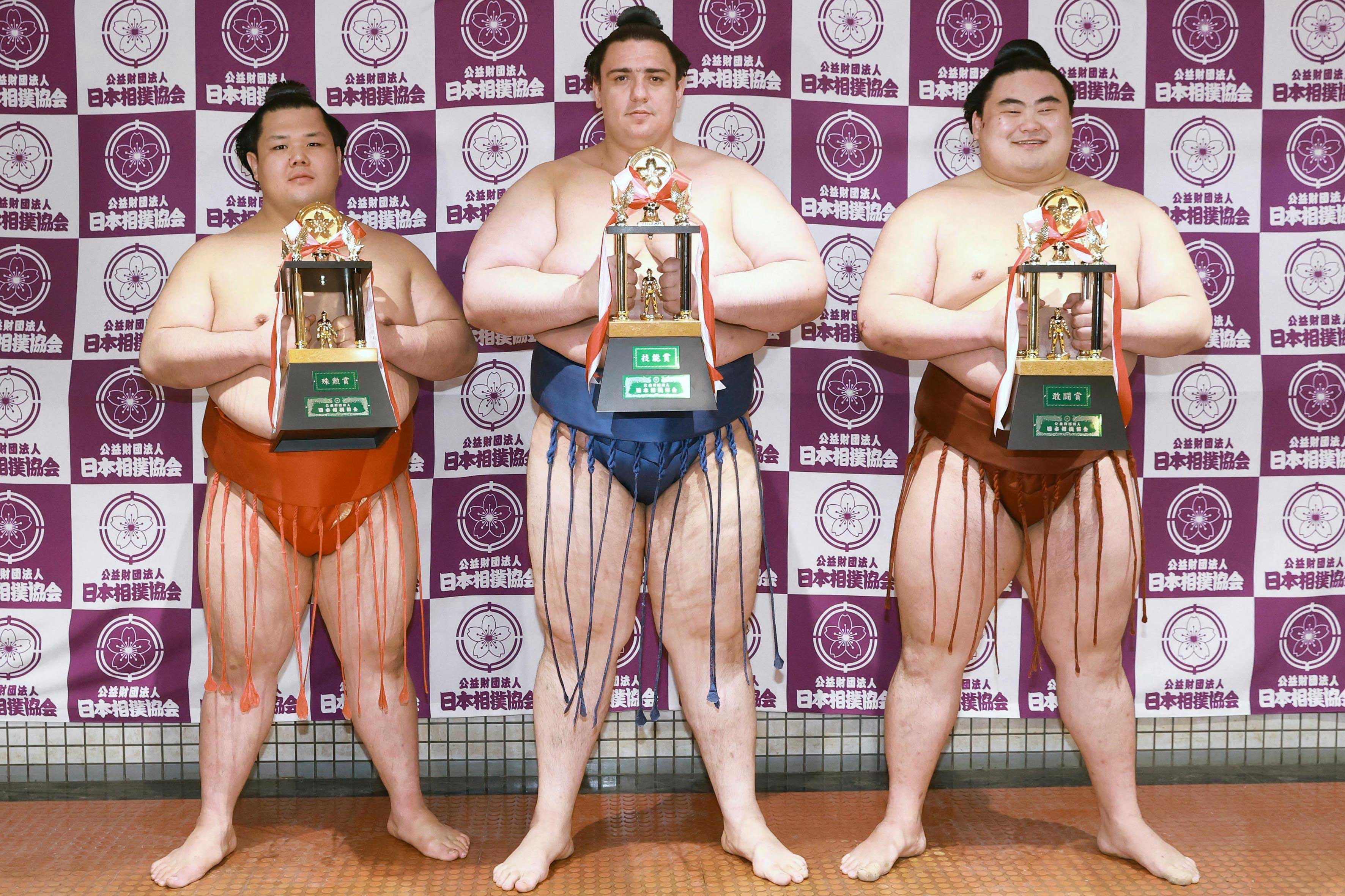
Onosho who derailed undefeated Hakuho on Day 10 was given the Outstanding Performance Award. The 23-year-old is considered as one of the next wave of stars, so you want to keep an eye on this man.
Takanosho left Osaka with the Fighting Spirit Prize. His undaunted spirit and aggressive fighting style allowed him to rack up 12 wins ... a well-respected runner-up record this time.
Bulgarian Aoiyama came up short of winning his first title, but his skillful thrusting attack, which enabled him to win 11 bouts, impressed the sumo elders. As a result, Aoiyama earned the Technique Prize.
Chairman expresses gratitude
Before closing the spring tournament, the sumo association chairman Hakkaku gave his final speech with all the top division wrestlers joining him at his side.
Hakkaku said "Sumo began 1,500 years ago in Japan to pray for world peace. I'm so proud of all the wrestlers and association members for truly dedicating their souls and bodies to successfully carrying out this year's spring tourney which was held under such unusual and difficult circumstances." He also thanked all the fans who cheered the wrestlers as they watched them compete on television and the Internet.
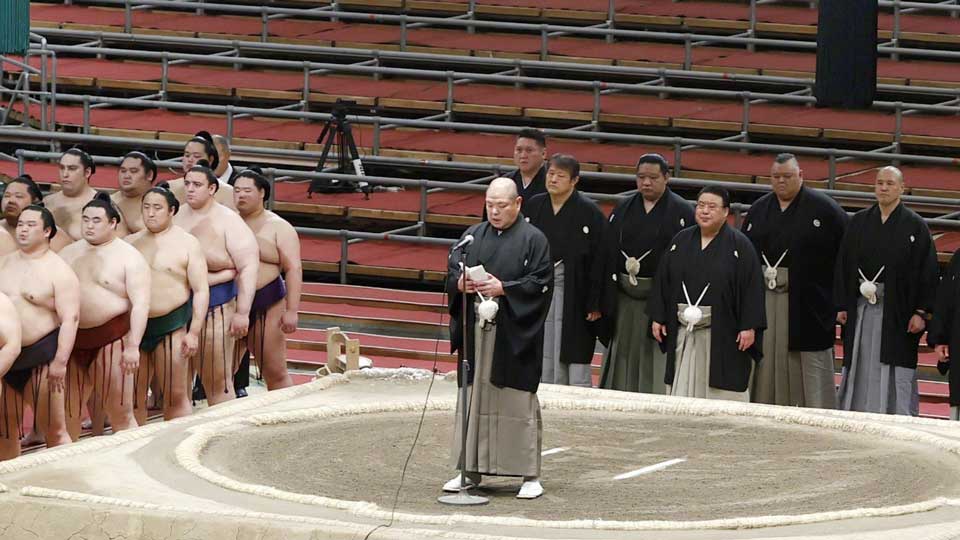
Looking ahead
The next grand sumo tournament is scheduled to take place at the home of sumo, Ryogoku Kokugikan, starting on May 10th in Tokyo.
Fans must be anxious to see how the newly promoted Ozeki Asanoyama competes in his debut tournament at the second highest rank.
As for the Yokozuna, Kakuryu will try to redeem himself by winning the title. Allowing Hakuho to walk away with the Emperor's Cup right in front of him will motivate him big time -- no question.
Ozeki Takakeisho who finished with a losing record of 7 wins and 8 losses this time must regroup. In the next competition, he'll be required to score 8 wins to keep his Ozeki rank. Failing to do so will result in demotion from the rank.
Fans were banned from attending the spring tourney, so needless to say they'll be very eager to watch sumo live again in May.
Concerns remain
Lots to see and look forward to in the May contest, but concerns remain regarding the coronavirus.
Recently, organizers of almost all major domestic sporting events have either been forced to cancel, postpone, scale down or reschedule events. We're talking about professional baseball, golf tours, J-League Soccer, Rugby Top League, B-League Basketball, V-League Volleyball, Table Tennis, Speed Skating, Pro Boxing and of course the Tokyo Olympics and Paralympics.
Of course, fans are upset with all the cancelations and postponement of their favorite sporting events. But, many are showing their understanding because these measures are being taken with the athletes' safety in mind, just as they were in the spring sumo tournament.
Whether the May grand sumo tournament will take place as planned is still very much up in the air. It depends on how successfully the new coronavirus is contained in the coming weeks. If the situation gets worse and the pandemic keeps spreading, the fate of the May tournament will come under another cloud. It's a grim scenario, but one we have to keep in mind.
